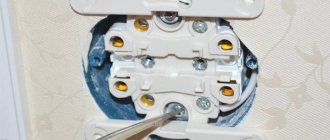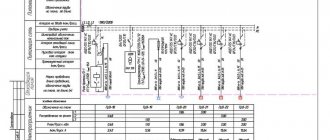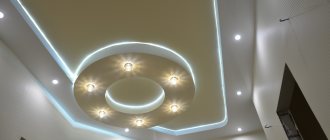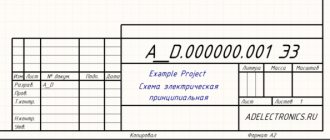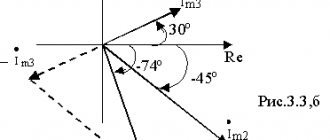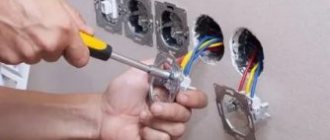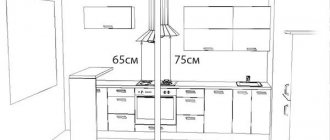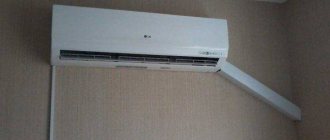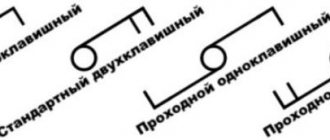Author: Olxi
February 26, 2015 11:17
Tags: sockets in the world
139911
15
There are a great variety of ways to connect to the electrical network, different types of plugs and sockets, and for a tourist (coupled with different voltages and frequencies), such diversity turns into a serious problem. Of the many connections, there are 13 most commonly used types of sockets, designated by Latin letters from A to M.
0
See all photos in the gallery
0
Type A
0
Used in North and Central America and Japan. This type is designated Class II. The plug consists of two parallel contacts. In the Japanese version, the contacts are the same size. In American, one end is slightly wider than the other. Devices with a Japanese plug can be used in American outlets, but vice versa will not work.
Maintainability
The design of the table lamp plug used in mass production does not allow for acceptable repairs in the event of damage. Although such monolithic plugs can be cut and the internal contacts restored by soldering, after such an operation it is impossible to ensure electrical safety while maintaining normal appearance. This applies to all monolithic solutions. If they are damaged, the power cable is cut as close to the plug as possible, stripped, the grounding conductor is identified and connected to a new collapsible plug.
Type B
0
Used in North and Central America and Japan. This type is designated as Class I. The international designation of the American type B is NEMA 5-15, the Canadian type B is CS22.2, n°42 (CS = Canadian Standard). The maximum current is 15 A. In America, type B is very popular; in Japan it is much less common. Often, residents of old houses with type A sockets, when purchasing new modern electrical appliances with type B plugs, simply “bite off” the third grounding contact.
Conservative electrical outlet in the 21st century
The classic concept of an electrical outlet, which appeared at the end of the 19th century, has remained virtually unchanged in the 21st century. Yes, of course, the variety of types of electrical plugs is really impressive, but from the point of view of safety and convenience, they are still at the level of the century before last.
Convenient connection to a new type of outlet
The new Mi Plug electrical system has already been awarded in competitions and has received several awards: Lexus Design Award 2021, John Lewis Design and Innovation Award 2021, James Dyson Award 2021. The inventor, Will de Brett, a graduate of the British Northumbria University in Newcastle, is currently trying standardize your system internationally.
Everything is simple, safe and convenient
Over the past decades, the structure of electricity consumption in homes and offices has changed dramatically - many low-power energy-efficient devices that require both constant and regular connection to an electrical outlet. A table LED lamp, a beautiful night light, a small radio and a variety of constantly recharged portable devices - this is the main list of “consumers” of the new system.
Type C
0
Used in all European countries except Great Britain, Ireland, Cyprus and Malta. International designation – CEE 7/16. The plug consists of two contacts with a diameter of 4.0-4.8 mm at a distance of 19 mm from the center. The maximum current is 3.5 A. Type C is an outdated version of the newer types E, F, J, K and L, which are now used in Europe. All Type C plugs fit perfectly into the new sockets.
Non-removable electrical plug device
The design of non-removable electrical plugs of any type is the same. The pins are installed at a distance of 19 mm into a plastic strip and conductors are pressed into them. There are two protrusions on the bar that serve to guide the wire. The bypass is necessary to prevent the plug cord from breaking if significant force is applied to it. For example, removing a plug from an electrical outlet by the wire, which is strictly prohibited.
The pins and wire are filled with molten plastic. This creates a sealed, waterproof plug housing with the power cord securely fixed in it.
Device of a collapsible three-pole electrical plug
In the recent past, only dismountable plugs were used to connect electrical appliances to the electrical network. And even now a large number of them are still in operation. You cannot do without a collapsible fork if you need to replace a failed cast one. The good thing about a collapsible fork is that it can be used multiple times. It can be easily removed from an unnecessary electrical appliance and installed on another cord during repairs.
Device of a collapsible electrical plug C1-b
In front of you is a plug of type C1-b, disassembled into its component parts, designed for connecting electrical appliances with a power of up to 1200 W to the electrical network.
It consists of two body halves, two brass pins, a cord clamp and fasteners.
Device of a collapsible electrical plug C6
Let's consider the device of a collapsible plug with a grounding contact of type C6, designed for connecting electrical appliances with a power of up to 2200 W. Contact pads with threads for screwing wires are pressed onto the brass pins of the plug. The pins themselves are fixed to the base of the plug.
The housing has a grounding contact in the form of a brass strip with a thread for securing the grounding conductor. There is a strip for fixing the wire with a plastic gasket.
Type D
0
Used in India, Nepal, Namibia and Sri Lanka. International designation is BS 546 (BS = British Standard). Represents an obsolete British style plug, which was used in the mother country until 1962. The maximum current is 5 A. Some Type D sockets are compatible with Type D and M plugs. Type D sockets can still be found in older homes in Great Britain and Ireland.
Variety of modifications
The term “euro” is used in relation to the CEE 7/4 standard (Type F, or Shuko) - these are fairly large products that necessarily contain a grounding contact or rod in the design. The socket holes are deepened in such a way that when the plug is turned on, it is impossible to accidentally touch the half-extracted rods of the plug. The plug-in connection using CEE 7/4 is designed for 16 A and 230 V. The name “euro” was given due to the fact that in Soviet times, devices from the GDR and Czechoslovakia were supplied with exactly such plugs.
In fact, the Euro fork does exist. This is a solution based on the CEE 7/16 standard. Those who have ever wondered what the structure of a table lamp plug is, knows all the features of this type of design. For others, let us explain: a Europlug consists of two rods with a thickness similar to Soviet (ordinary) plugs, located in a thin monolithic body made of dense rubber. There is no grounding contact. The shape is such that such a plug can be easily inserted into a socket of almost any design. Safety from accidental contact is achieved by insulating most of the rods, leaving only the outer parts, about 5 mm long, exposed. These Euro plugs are designed for connecting low-power equipment, such as table lamps. The permissible current is 2.5A, although there are modifications for 5A.
Type F
0
Used mainly in Germany, Austria, the Netherlands, Sweden, Norway, Finland, Portugal, Spain and Eastern European countries. International designation CEE 7/4. This type is also known as "Schuko". The maximum current is 16 A. All type C plugs are ideally suited to type F sockets. The same type is used in Russia (in the USSR it was designated as GOST 7396), the only difference is that the diameter of the contacts adopted in Russia is 4 mm, in while in Europe, contacts with a diameter of 4.8 mm are most often used. Thus, Russian plugs easily fit into wider European sockets. But the plugs of electronic devices made for Europe do not fit into Russian sockets.
Types of electrical plugs
Currently, in Russia, all electrical appliances are produced with cords at the end with two types of permanent plugs, type C, in accordance with GOST 7396.1-89. The body of each plug is usually marked with a marking indicating its technical characteristics - the maximum permissible current and the permissible supply voltage. This does not mean that this electrical appliance consumes such a current, but only indicates that the plug is designed to transmit current up to the specified value.
C5
(analogue of European electrical plugs CEE 7/16) - with round pins with a diameter of 4 mm, converging slightly towards the free ends, the pins are insulated to a length of 10 mm from the body, without a grounding contact. The C5 plug is designed for a load current of up to 6 A (with a supply voltage of 220 V it can withstand a power of 1300 W).
C6
(analogous to European plugs CEE 7/17) - with round pins with a diameter of 4.8 mm, there are three-pole with a grounding contact and two-pole without a grounding contact. The C6 plug is designed for a load current of up to 10 A (with a supply voltage of 220 V it can withstand a power of 2200 W).
There are still many devices in use with cords equipped with collapsible plugs type C1-b
with round pins with a diameter of 4 mm without a grounding contact and designed for a load current of up to 6 A (with a supply voltage of 220 V it can withstand a power of 1300 W).
CONNECTION DIAGRAM FOR 380 VOLTS PLUG
Now you can connect the wires to the terminals of the mechanism of our ABB 380 volt plug. In this case, the arrangement of the contact pins of the plug looks like this:
Do not confuse this with the diagram for connecting wires to the terminals of a three-phase plug. The wires must be connected to the terminals of the plug mechanism in accordance with the markings opposite each of them. Below is a detailed diagram of connecting the trezphah plug.
So, next we connect the wires to the three-phase plug according to the diagram. At the same time, as you remember, in our case we leave the zero terminal empty. For other equipment where a working zero is required, all wires are connected.
Place the stripped wires into the terminal blocks and tighten the mounting screws.
After we are convinced of the reliability and safety of the connection, we assemble the power plug. First of all, we screw the housing that protects the contacts onto the socket mechanism. And then the cable gland-clamp is screwed onto the body.
Moreover, the design of this plug, namely the cable clamp, is made in such a way that the more you twist it, the more securely the power cable is fixed in the plug. This feature allows you to connect 380 volt plugs to three-phase electrical equipment with power cables of various sections. A cable securely clamped into the plug will protect against the possibility of accidental pulling of wires from the terminals.
This completes the installation and connection of the 380 volt plug. If you have any questions or suggestions regarding the article, do not hesitate to write them in the comments to the article, I will try to answer everyone.
After installation is completed, you can plug the plug into a three-phase power outlet and use electrical equipment.
Connector A standards
Angled plug with type A connectors is used in Japan and America. In the American version, the pins have different thicknesses, in the Japanese they are the same. Another name is Class II. An Asian plug fits into an American outlet, but not vice versa. Here is an example of an American plug. If the standard of the plug or socket does not coincide with the Russian one, then adapters are used.
Domestic devices
A plug produced in Russia must meet the standards of GOST 7396. Technical parameters are applied to the body - these are voltage, frequency, current. Device groups of this category:
- CEE 7 / 16 or C 5 with 4 mm contacts, insulated from the housing, designed for current limits of 6 Amperes;
- CEE 7/17 – here the plug belongs to class C 6, has thickened pins, a current limit of 10 Amperes.
Old C1 - b plugs are equipped with pins 6 mm thick and do not have grounding.
